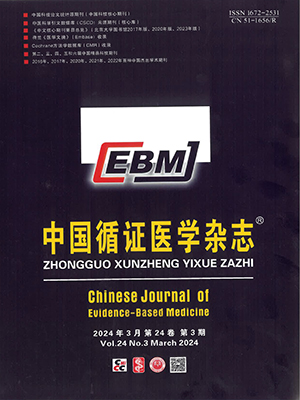Objective To evaluate the safety and efficacy of steroid withdrawal in modern triple immunosuppressant (Cycloproine/Tacrolimus, Mycophenolate Mofetil and Steroid) on renal transplantation recipients.
Methods We searched MEDLINE (1966-Sep. 2005), OVID (1966-2004), EMBASE (1984-2004), The Cochrane Library (Issue 4, 2005), CBMdisc (1994-2005), and handsearched 7 Chinese Journals. Randomized controlled trials (RCTs) adopting modern triple immunosuppressant, and comparing steroid withdrawal (SW), group and steroid continuing group (SC) were selected. The quality of included studies was evaluated and graded according to Cochrane Reviewer’s Handbook 4.2.5, and meta-analysis was performed by using RevMan 4.2.7 software.
Results Nine RCTs including 1 681 patients (845 in SW and 836 in SC) were identified. The average follow-up time was 6-12 months. No significant difference was found in using CsA or Tac in modern triple immunosuppressant. The results of our meta-analysis showed: ① the risk of acute rejection was two times higher in SW than SC (RR 2.05, 95% CI 1.54 to 2.72, P lt;0.000 01), mainly Banff grade I (mild) (RR 1.92, 95% CI 1.16 to 3.17, P =0.01); but no significant differences were found on Banff grade II and III between the two groups. ② the rate of graft and patient survival and chronic rejection were the same between two groups. ③ Steroid withdrawal decreased the incidence of opportunistic infection (mainly caused by simplex herpes virus and Candida) and urinary tract infection. While the incidence of CMV and sepsis infection has no significant difference between two groups.
Conclusion Steroid withdrawal within 3 months in modern immunosuppressive regimen ① increases the risk of Banff Grade I rejection reaction, but the moderate and severe rejection are similar between the two groups; ② doesn’t affect the rate of graft, patient survival, and chronic rejection; ③ decreases the incidence of opportunistic and urinary tract infection, but doesn’t improve the CMV infection and sepsis. To prophylaxis serious infection, steroid withdrawal is worth considering under sufficient immunosuppressive regimen. The key point is to balance the benefit and harm for individual recipients.
Citation: TAN Jiying,ZHAO Na,WU Taixiang,YANG Kehu,TIAN Jinhui,LIU Yali,WANG Li,SUN xin,LU Yiping,LI Youping. Safety and Efficacy of Steroid Withdrawal in Modern Triple Immunosuppressant: A Systematic Review. Chinese Journal of Evidence-Based Medicine, 2006, 06(4): 273-281. doi: Copy




